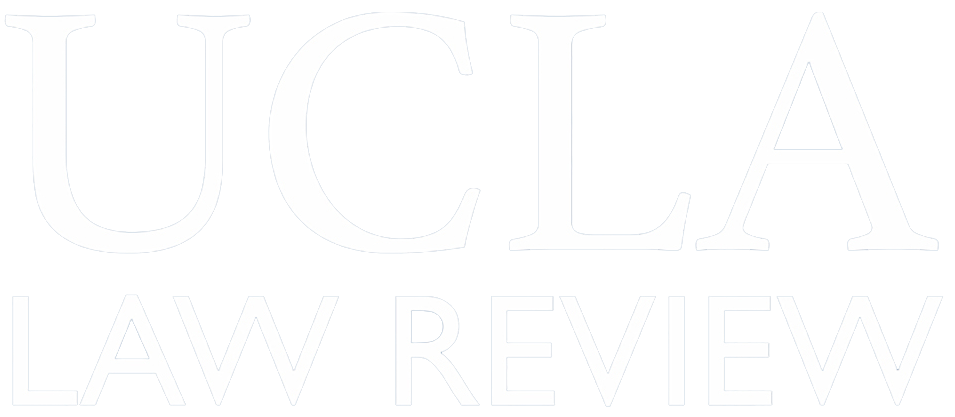Abstract
Law professors, particularly those who teach Property or Constitutional Law in the United States, should center public accommodation law in our pedagogy. In 303 Creative LLC v. Elenis, 600 U.S. 570 (2023), the Supreme Court has provided new impetus and fresh material by which to guide our students to contemplate, and join in, the intergenerational struggle over law’s meaning and its power to resolve conflicting claims between individual parties—and the social groups with which they relate or affiliate. 303 Creative also provides a new way to appreciate what Robert Cover famously theorized, in 1986, as “legal violence,” the insight that legal interpretation inherently involves the violence of state power even as it seeks to create a normative universe of shared meaning. Cover particularly underscored that whether or not one is subjected to that violence profoundly affects how one understands the shared meaning that legal interpretation achieves.
Thus, for people who are sympathetic to the 303 Creative plaintiff and her cause, the Court has protected a person, who had incorporated her web design business as a limited liability corporation, from being compelled by the state to speak in ways that would violate her sincere religious belief that marriage is—or rather should only be—a union between one man and one woman. In stark contrast, for people who are directly subjected to the implications of the Court’s new exception to state public accommodation law, the Court’s majority opinion in 303 Creative justifies their exclusion from law’s protection against invidious discrimination, notwithstanding public accommodation law’s purpose to protect everyone’s equal dignity in the common marketplace and to ensure equal access to publicly available goods and services.
Beyond critiquing 303 Creative, this Essay contextualizes 303 Creative within a partial, yet true, history of public accommodation law, and its jurisprudential roots in the antebellum common law doctrine of “common callings.” Reviewing the Court’s salient public accommodation opinions from 1832 to 1968, this article shows two distinct ways in which the Court used the phrase “public accommodation.” Prior to 1873, the Court exclusively used the phrase as shorthand for when a person’s rights in private property were limited by a prior grant of certain rights in that property (say a dedication), or by the state’s police power to effect the public welfare. Starting in 1873, the Court began to consider public accommodation law’s modern civil rights meaning, wherein the government enacts a statute to proscribe merchants who publicly offer goods or services for sale from certain forms of invidious discrimination against potential buyers.
In relating its partial history of public accommodation law, this Essay contrasts two of the Court’s Reconstruction-era opinions, Washington, Alexandria & Georgetown Railroad Company v. Brown, 84 U.S. 445 (1873), and Th e Civil Rights Cases, 109 U.S. 3 (1883). In the former, the Court required a railroad company to provide racially integrated services, based on an express Congressional mandate, in the legislation that granted the company the right to extend its railway further into Washington, D.C., that no person shall be excluded from the railroad cars “on account of color.” In the latter, as is well known, the Court’s interpretation of the Thirteenth and Fourteenth Amendments contributed to the establishment of Jim Crow racial segregation by holding that the Civil Rights Act of 1875’s public accommodation provision was unconstitutional. Beyond its particular ruling, The Civil Rights Cases significantly contributed to what this Essay likens to a “reset of the Matrix:” despite the efforts of legal realists, aft er The Civil Rights Cases, jurists, law professors, and other lawyers increasingly came to misapprehend public accommodation law’s true jurisprudence, truncating their understanding of its antebellum history, particularly its roots in the common law doctrine of common callings, and instead erroneously believing that merchants had always enjoyed a general right to exclude, a right which developed in anticipation of and in reaction to the emancipation of the people whom U.S. law and custom had long racialized as Black—and their consequent inclusion in the general public.
Decades later, even as the Court affirmed the constitutionality of the Title II public accommodation provision of the Civil Rights Act of 1964, this misunderstanding of the history of public accommodation law persisted, for example in the majority opinion in Heart of Atlanta Motel, Inc. v. U.S., 379 U.S. 241 (1964), and this distorted understanding of public accommodation law continues to shape the Court’s public accommodation jurisprudence, particularly during the Rehnquist and Roberts Courts, which have increasingly undermined public accommodation law, limiting state antidiscrimination efforts in furtherance of a peculiar vision of First Amendment freedoms.
The article’s partial history ends with an infrequently taught case, Newman v. Piggie Park Enterprises, Inc., 390 U.S. 400 (1968) (per curiam), to which Justice Sotomayor cited in her dissent to 303 Creative. In Piggie Park, the Court affirmed the lower courts’ unequivocal rejections of the defendant business owner’s argument that Title II of the Civil Rights Act of 1964 was invalid because it contravened the will of God and violated his religious beliefs to oppose racial integration. In 1968, the Court even affirmed the lower courts’ findings that such an argument was frivolous.
In 303 Creative, the Roberts Court did not overrule Piggie Park, but its 2023 public accommodation opinion opens the door for courts to consider what other exclusions and stigmas—what other forms of sociolegal violence—the law will once again permit.
